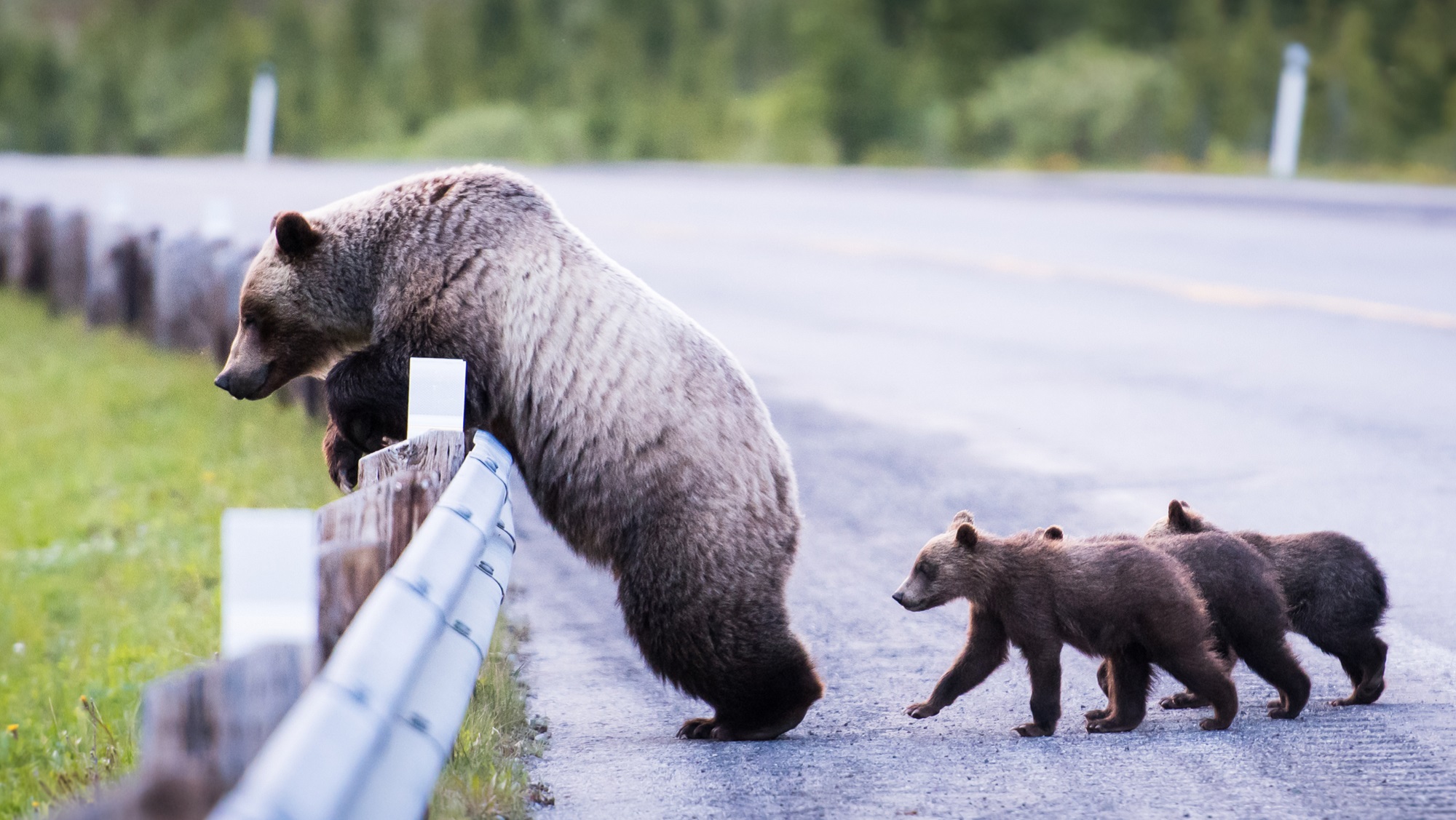

More than 4 million miles of roads crisscross the US. So it’s little surprise that roadkill makes up a big chunk of the country’s animal deaths: By 1998 it had surpassed hunting as “the leading direct human cause of vertebrate mortality on land.” Today, wildlife officials in California are concerned that vehicle collisions are killing mountain lions faster than they can reproduce. Moose keep getting struck on roads in Alaska and even Connecticut. But while hit-and-runs with big mammals are gruesome and significant, they’re just one way roads are detrimental to nature.
Grizzly deaths
In a paper published on September 20 in the journal Wildlife Monographs, scientists used GPS tracking and DNA data from fur samples collected between 1998 and 2005 to monitor the grizzly bear population in southeastern British Columbia, Canada, and study which variables affect their distribution—and their mortality. They found that the grizzly population density was 2.6 times higher in areas with less than .37 miles of roads per mile of land. The reason? Roads drive bears away from areas that are filled with perfectly good food sources like huckleberry bushes, and increase the risks of deaths just by putting the creatures closer to people.
[Related: Watch bobcats, bears, and even birds use fallen logs as bridges]
Southeastern British Columbia largely has dirt roads with low speed limits, says Michael Proctor, an independent research ecologist and lead author of the new paper, but you can still “see that bears get killed around forestry roads in the backcountry for a variety of reasons.” For one, the routes give people access to more wilderness—to the detriment of bears. The vast majority of grizzlies that are killed in the wild (both legally and non-legally) are shot within 1,600 feet of an open backcountry road.
Roadkill patterns
When we move from backcountry roads to more paved roads and highways, that’s when we see more vehicles hitting animals. The resulting collision rates are affected by a whole slew of variables.
In a 2022 study in the journal Current Biology that included more than 1 million deer killed on roads in the US, researchers found that collisions are most likely to happen within an hour or two after it gets dark. “It’s kind of the coincidence of a period of the day when humans are driving a lot, and a time when animals are moving around a lot,” says co-author Calum Cunningham, a wildlife ecologist and postdoctoral research fellow at The University of Tasmania who studies animal-vehicle collisions in various countries. Ungulates like deer and elk are crepuscular, so they tend to be most active around dawn and dusk. “That’s kind of the perfect storm for creating very high periods of collisions,” Cunningham explains.
In their study, Cunningham and his team also noted that collisions were more common in places located on the eastern side of a time zone, where the sun sets earlier. A strategy like implementing pushing the clock back an hour all year, he says, would not only reduce these accidents, but save about $1.2 billion associated with injury costs, vehicle damage, and insurance. (Researchers say wildlife-vehicle collisions cause more than 9,000 injuries and 440 fatalities among Americans each year.)
[Related: All the ways daylight saving time screws with you]
In another paper, Cunningham and colleagues found that moose collisions in Alaska, the Yukon Territory, British Columbia, and Alberta ramp up during the winter likely due to low visibility, increased moose activity on roads (which are easier to walk on than snow-laden wilderness), and the difficulties of driving and controlling a car in the winter. More recently, researchers from the University of California, Davis calculated that cars kill about 70 mountain lions a year on California highways alone. That estimate is likely an undercount because it didn’t include incidences on city or county roads, and because many hit-and-runs with mountain lions go unreported.
A prevention plan
Fortunately, some interventions can bring down the number of large mammals dying on or near roads. Underpasses and overpasses have successfully slashed roadkill rates around the US, especially when fenced. And while overpasses can be quite expensive to build, Cunningham says, they are one-off costs that pay for themselves by saving collision costs over time.
Another strategy includes reduced speed limits, even on a seasonal basis, Cunningham explains. But that only works if drivers adhere to those limits, which often isn’t the case. More public awareness of the benefits of speed limit for wildlife and people could help increase animal survival, Cunningham says.
Proctor, the grizzly bear researcher, wants to see more drastic change. “The solution is to close a portion of the roads,” especially in the backcountry where valuable food supplies are, he says. “But that’s a very unpopular idea and is challenging to do.” At the least, in places of especially high conservation concern, we need to be thinking about all the ways roads disturb elements of wildlife behavior, he notes. Though roadkill is a sobering sight, sometimes, the damage is far less visible.
